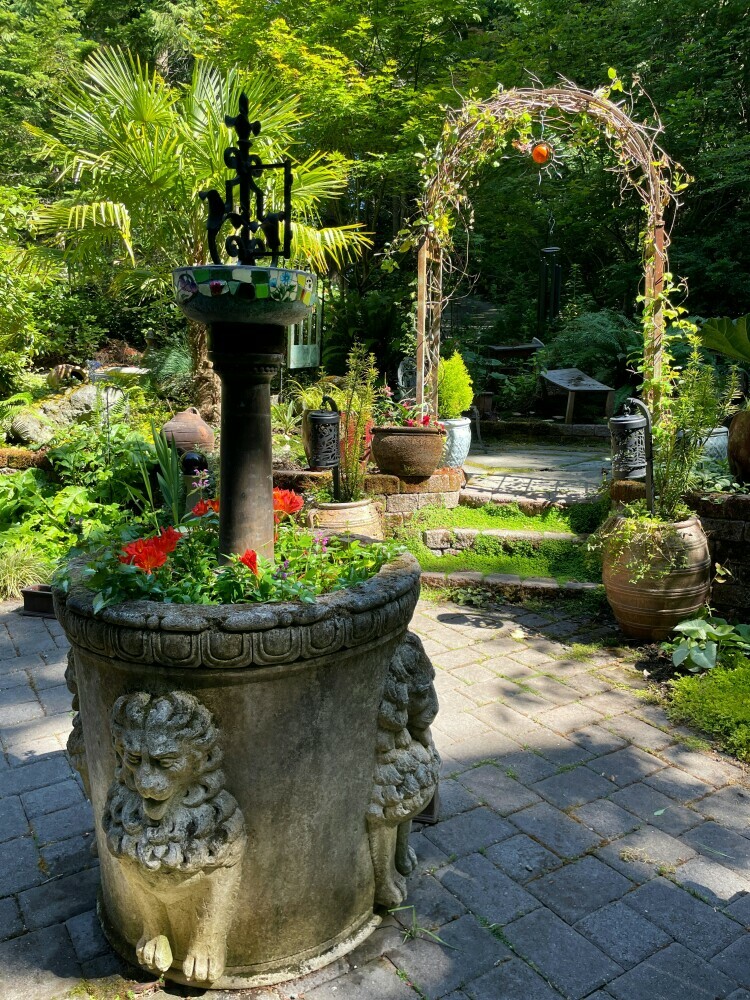
Beyond Blooms: Cultivating a Garden Oasis in Harmony with Nature
For many, gardening is a source of pride and pleasure. Lush flowers, vibrant vegetables, and the satisfaction of nurturing life all contribute to the allure. But what if your garden could be more? What if it could be a thriving ecosystem, a vibrant tapestry woven with nature’s wonders?
This blog post delves into the concept of gardening in harmony with nature. By adopting a few key principles, you can transform your plot into a flourishing ecological community that benefits you and the environment.
Understanding Your Local Ecosystem: The Foundation of Harmony
Before digging in, take a moment to learn about your local ecosystem. What native plants already grace your landscape? What kind of wildlife thrives in your area? Choosing native flora not only requires less maintenance but also attracts pollinators like butterflies and bees, fostering a healthy balance.
Nature’s Welcome Wagon: Attracting Beneficial Wildlife
Your garden can be a haven for helpful creatures. Plant a variety of flowering herbs and native wildflowers to create a buffet for pollinators. Let some fallen leaves provide shelter for beneficial insects like ladybugs, natural predators of harmful pests.
Rejecting Invaders: The Importance of Native Plants
Invasive plant species disrupt the delicate balance of an ecosystem. Research and avoid planting them, as they can crowd out native flora, creating a monoculture that benefits few creatures.
Sustainable Practices for a Thriving Garden
- Embrace Organic Methods: Ditch the harsh chemicals! Organic fertilizers and pest control methods nurture your plants and protect the environment.
- Compost Like a Champion: Composting kitchen scraps and yard waste creates nutrient-rich fertilizer, reducing waste and feeding your garden.
- Conserve that H2O: Utilize water-efficient plants and mulching techniques to retain moisture, saving this precious resource.
Working with Nature, Not Against It: Natural Pest Control
Nature has a built-in pest control system waiting to be utilized! Attract ladybugs and birds by planting specific flowers and herbs. They’ll naturally devour harmful insects, keeping your garden healthy without harming beneficial creatures.
Creating a Self-Sustaining Paradise: A Long-Term Vision
- Permaculture Principles: Explore permaculture, a design philosophy that creates self-sufficient ecosystems. Strategically placing plants that complement each other minimizes external inputs and maximizes natural processes.
- Plant Diversity is Key: Monocultures are vulnerable to disease and pests. Plant a variety of species to create a more resilient garden.
- Healthy Soil, Healthy Garden: Nutrient-rich soil is the foundation of a thriving ecosystem. Implement practices that promote healthy soil, like cover cropping and compost application.
The Human Connection: More Than Just Plants
Gardening in harmony with nature is about more than just the garden itself. It’s about fostering a connection with the natural world.
- Educate and Inspire: Share your eco-friendly gardening practices with your community.
- Mind and Body Benefits: Gardening is a well-documented stress reliever and mood booster. Immerse yourself in nature and reap the mental and physical rewards.
- Nurturing the Next Generation: Get children involved in gardening. It’s a fantastic way to instill environmental values and a love of nature from a young age.
By following these tips, you can cultivate a garden that’s not just beautiful, but also a haven for wildlife and a testament to your commitment to living in harmony with nature. So, plant the seeds of change, embrace sustainable practices, and watch your garden flourish in a way that benefits both you and the environment.

